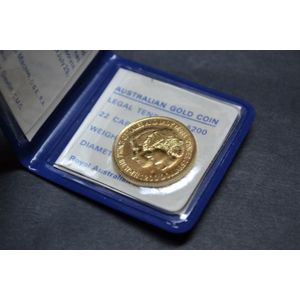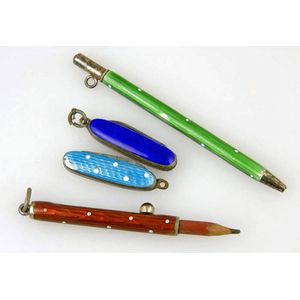J.F. Bautte Enamel Key Wind Watch with Matching Chain
A J. F. Bautte open face enamel key wind watch, gilt cylinder movement with three-arm balance, engine turned offset gold dial with Roman numerals, steel hands. The champleve case decorated in a foliate design with matching watch chain and key. The dust cover engraved 'J. F. Bautte, Geneve, Arguelles, no 48843'. circa 1830. Diameter: 35 mm. Provenance: The collection of Dr Trevor Hyde, Sydney. Other Notes: Jean-Francois Bautte was an eminent watch maker in Geneva and Paris who specialised in making very thin watches. This example is just under 6 mm thick.
You must be a subscriber, and be logged in to view price and dealer details.
Subscribe Now to view actual auction price for this item
When you subscribe, you have the option of setting the currency in which to display prices to $Au, $US, $NZ or Stg.
This item has been sold, and the description, image and price are for reference purposes only.
- Foliate - Decorated with leaves or leaf-like forms.
- Engine Turned - Engine turning is a decorative technique used on metal surfaces to create intricate curving or geometric pattern. The process involves cutting a series of lines into the surface of the metal using a rose engine or decoration lathe which rotates the metal as it cuts, allowing the operator to create a repeating pattern that covers the entire surface. The resulting surface has a shimmering, reflective quality that is often described as "engine turned." Where an engine turned item has been enamelled, the term used to describe the decoration is usually guilloche.
Engine turning was originally developed to decorate metal objects such as firearms, scientific instruments, and other metal objects that required precise and elegant design. - Movement - The technical name for the workings of a clock or watch, and does not include the dial or case.
- Circa - A Latin term meaning 'about', often used in the antique trade to give an approximate date for the piece, usually considered to be five years on either side of the circa year. Thus, circa 1900 means the piece was made about 1900, probably between 1895 and 1905. The expression is sometimes abbreviated to c.1900.
This item has been included into following indexes:
Visually similar items

A pair of Sevres hand decorated lidded urns with gilt ormolu mounts, in perfect condition. Height 25 cm each
Sold by
in
for
You can display prices in $Au, $US, $NZ or Stg.

Australian $200 gold coin 1981 Royal Wedding
Sold by
in
for
You can display prices in $Au, $US, $NZ or Stg.

9ct yellow gold Italian bracelet, weight: approx 2.4 grams
Sold by
in
for
You can display prices in $Au, $US, $NZ or Stg.

Two enamelled miniature pocket knives together with two enamelled propelling pencils
Sold by
in
for
You can display prices in $Au, $US, $NZ or Stg.
